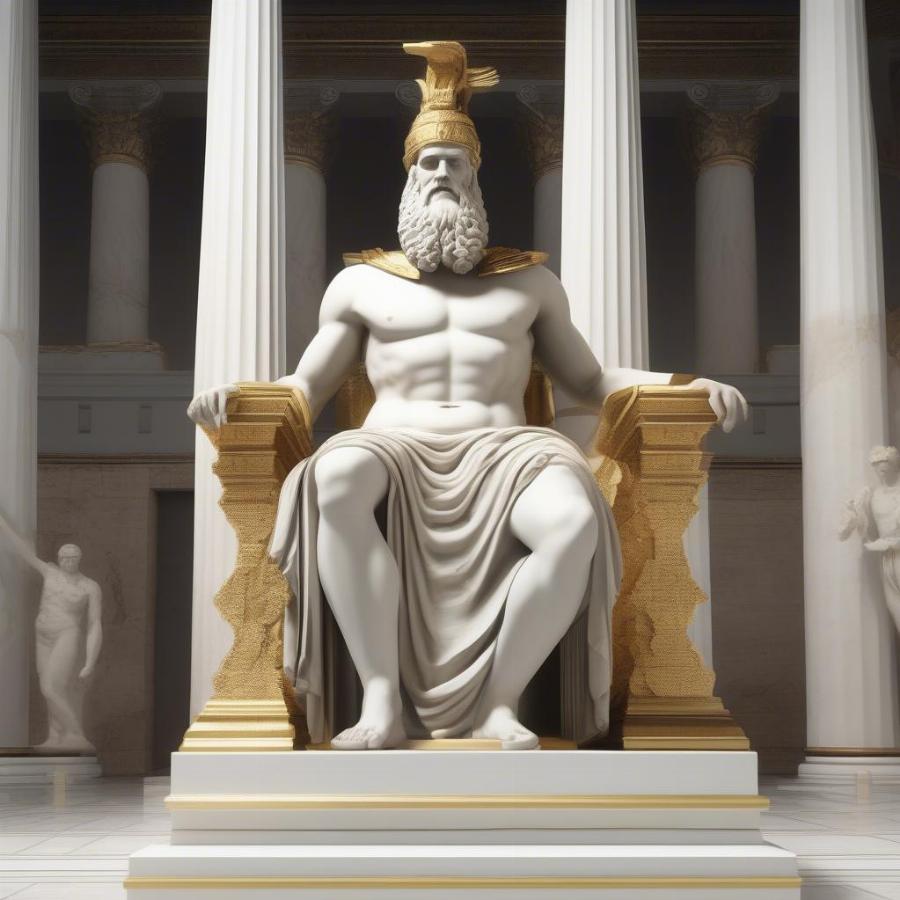List of Seven Wonders of the Ancient World: A Journey Through Time

The List Of Seven Wonders Of The Ancient World represents remarkable feats of construction and artistry, showcasing the ingenuity and ambition of ancient civilizations. These structures, built thousands of years ago, captivated the imaginations of travelers and scholars, solidifying their place in history. Let’s embark on a journey to explore these magnificent wonders.
Unraveling the Seven Wonders of the Ancient World
The seven wonders were initially compiled by ancient Greek historians and writers as a guide to the most impressive architectural and artistic achievements known to the Hellenistic world. This list, though it evolved over time, served as a testament to human accomplishment and inspired awe and wonder. Why seven? The number seven held symbolic significance in ancient Greek culture, representing completeness and perfection.
The Great Pyramid of Giza: A Timeless Monument
The only wonder of the ancient world still standing, the Great Pyramid of Giza stands as a testament to the power and sophistication of ancient Egypt. Constructed around 2580-2560 BC as a tomb for Pharaoh Khufu, it remained the tallest man-made structure for over 3,800 years. Its immense size and precise construction continue to puzzle and fascinate researchers today.

The Hanging Gardens of Babylon: A Lost Paradise?
Shrouded in mystery, the Hanging Gardens of Babylon are a source of both fascination and debate. Ancient texts describe a lush, tiered garden built by King Nebuchadnezzar II for his wife, Queen Amytis. However, no archaeological evidence has been found to definitively confirm its existence. Were they a figment of imagination, or a marvel lost to the sands of time?
The Statue of Zeus at Olympia: A Divine Creation
Dedicated to the king of the gods, the Statue of Zeus at Olympia was a colossal seated figure, approximately 41 feet tall. Crafted from ivory and gold by the renowned sculptor Phidias, it was considered one of the greatest works of classical Greek art. Sadly, it was destroyed by fire in the 5th century AD.

The Temple of Artemis at Ephesus: A Sanctuary of the Goddess
Dedicated to the Greek goddess Artemis, the Temple at Ephesus was a grand structure renowned for its impressive size and intricate marble sculptures. It was tragically destroyed and rebuilt several times throughout history, each iteration showcasing the architectural advancements of the era. Similar to the 7 lost wonders of the world, the Temple of Artemis serves as a reminder of the ephemeral nature of even the most impressive human creations.
The Mausoleum at Halicarnassus: A Tomb Fit for a King
The Mausoleum at Halicarnassus was a lavish tomb built for Mausolus, a satrap in the Achaemenid Empire. Its intricate sculptures and imposing size earned it a place among the seven wonders. The word “mausoleum” itself is derived from Mausolus’s name, highlighting the structure’s lasting impact on language and architecture.

The Colossus of Rhodes: A Guardian of the Harbor
A towering bronze statue of the Greek sun god Helios, the Colossus of Rhodes stood guard over the harbor entrance. At approximately 108 feet tall, it was one of the tallest statues of the ancient world. It was tragically toppled by an earthquake in 226 BC.
The Lighthouse of Alexandria: A Beacon of Light
Guiding ships into the bustling port of Alexandria, the Lighthouse of Alexandria was a marvel of engineering. Standing at an estimated height of 330 to 450 feet, it was one of the tallest man-made structures for centuries. Its intricate design and powerful light source made it a vital navigational aid for ancient mariners.

The Enduring Legacy of the Ancient Wonders
While only one of the original seven wonders remains, their stories continue to inspire awe and wonder. They remind us of the ingenuity and creativity of ancient civilizations and the enduring power of human achievement. Just as the 7 wonders of the world 2022 list continues to captivate us, so too do the ancient wonders retain their power to fascinate. These structures, though largely lost to time, represent remarkable accomplishments in architecture, art, and engineering. They serve as a reminder of our shared human history and the enduring legacy of human creativity. Much like exploring the 7 wonders of the natural world national geographic, understanding the ancient wonders allows us to appreciate the diverse wonders of our world, both natural and man-made. Similarly, understanding the various lists and criteria for wonders, as explored on many list of wonders of the world, provides valuable context for appreciating these incredible achievements. The list of seven wonders of the ancient world offers a glimpse into the past, encouraging us to explore the rich tapestry of human history and the remarkable achievements of ancient cultures. The enduring allure of these wonders continues to spark our imagination and inspire us to explore the world and its many marvels. Perhaps you’ll be inspired to learn about chichen itza 7 wonders of the modern world and how these modern marvels continue the tradition of celebrating human achievement.




